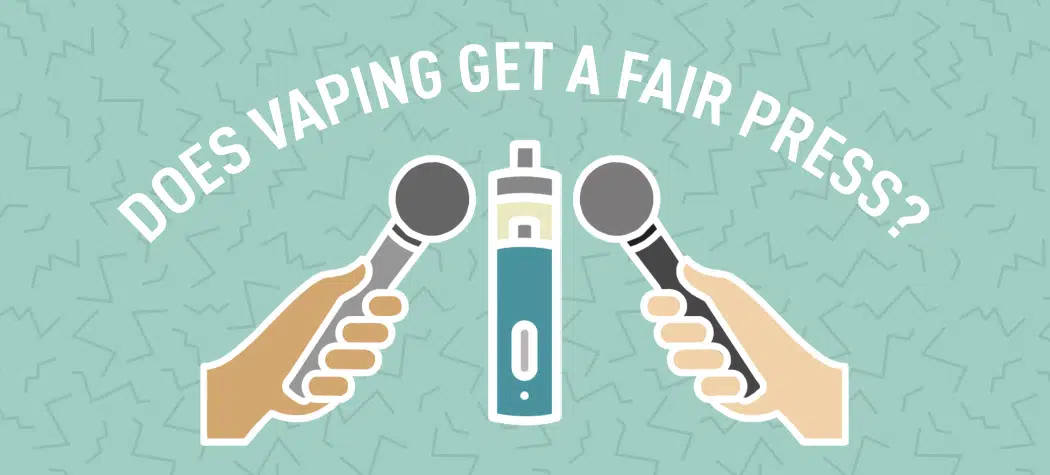Vaping News, Industry Research
Does Vaping Get A Fair Press?
Newspapers and television carry many stories about electronic cigarettes and vaping – but do they give tobacco harm reduction a fair deal?
As vaping has grown in popularity so has the divide in the scientific community. With most news stories in the media originating from press releases, a question has been asked recently about the balance in the coverage. Director of the World Vapers’ Alliance, Michael Landl believes the resulting coverage contributes to the documented misconceptions that smokers hold about electronic cigarettes.
What are typical vaping stories in the media recently?
- Teen addicted to vaping is on life support as e-cigarette damages lung – The Independent
- E-cigarettes branded ‘harmful’ as World Health Organisation calls for greater regulation to protect children – Sky News
- Super-strength vaping products seized in crackdown – BBC
- Smokers embrace vaping as e-cigarette market fires up – Evening Standard
- Two puffs on laced e-cigarette left my teenage son fighting for his life – Daily Mirror
- E-cigarettes could be prescribed on NHS under new plans to encourage more people to give up smoking – ITV
What does the World Vapers’ Alliance say?
“Ordinary people are constantly exposed to claims that vaping causes erectile dysfunction, makes you blind or is the cause of EVALI. While at the same time, almost nobody covers the fact that about 82 million smokers have been able to quit thanks to vaping,” says Michael Landl.
Tobacco harm reduction advocates in the United Kingdom have noted that even when newspaper editorial offices have been informed about the errors contained in their negative news stories, apologies and corrections are very rare. Consequently, despite being untrue, the negative coverage tends to be remembered.
Michael Landl continues: “One of the most significant public health victories in the last few decades goes unnoticed by large portions of the public and decision-makers alike. Instead, every bogus study or survey gets enormous media coverage whilst every truthful and enlightening report is passed over.”
How was the investigation conducted?
Michael decided to conduct an investigation to discover what the balance is between positive and negative news stories. Setting up a Google alert, he monitored all the breaking news stories about e-cigs, vaping, and e-liquid.
He is quick to point out that this isn’t a very scientific approach, but one that is indicative of the kind of coverage. In total, Michael received 41 notifications over the course of the seven days.
“According to my account, more than 40% of the articles were negative, and I have to admit, I was a bit surprised because I expected more negative coverage. 29% were neutral and 29% positive,” Michael Landl added.
He explained: “I randomly chose this week, excluded all articles paywalled, pure business reporting, ads, and press releases, and did not double count the same article in different outlets. I categorised the articles only on how they covered the issue and not if I would agree with the specific point or policy.”
What did the World Vapers’ Alliance conclude?
Michael concluded: “Even though I expected even more negativity, the way vaping is currently covered by media is a problem — for public health and consumers. If governments followed the science, 200 million lives could be saved worldwide by following the UK’s lead in encouraging smokers to switch to vaping.”
The World Vapers’ Alliance is a consumer organisation that says it “amplifies the voice of passionate vapers around the world and empowers them to make a difference for their communities. Our alliance includes groups representing vapers – our partners – as well as individual vapers from around the world.”
